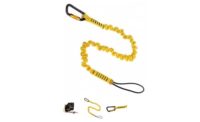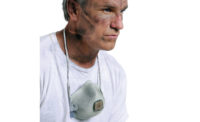Make time to evaluate your respiratory protection program

Once a company has implemented a comprehensive respiratory protection program, it is critical to then determine how well the program is working. Measuring program effectiveness helps determine if employees are receiving the protection that the program was designed for and when it is necessary to make adjustments to the program.
Healthy workers = working program?
Implementing the respiratory program is the easy part since methodologies for hazard evaluation, respiratory regulation, compliance elements and selection of the appropriate respiratory protection are relatively straightforward. Measuring the program’s effectiveness is not as clear cut. The metrics that must be used in evaluating the existing program, to a large extent, are qualitative, although there can be some quantitative elements involved depending upon the contaminant and the employer’s ability to have field workplace tests performed.
Obviously, one metric that indicates a program is not working is when the employee(s) appears to be having adverse health effects or possibly illness. No employer should ever plan on using this as the metric to evaluate their program, as at that point it may have already caused serious harm to the employee(s). Remember, just because you have not identified a problem in the program does not mean that the program is working properly. It often takes long periods of time before adverse effects of contaminants become evident. Never assume your program is effective just because no one is sick.
Proactive program evaluation
What methods can be used to proactively evaluate a workplace respiratory protection program?
First of all, plan on auditing your program on at least a yearly basis. Go through the written program and evaluate whether all requirements set forth are still relevant based on the actual needs of the employees. The company may have to perform periodic air sampling if a process or procedure has changed that may affect exposure levels. Compare your written program to the local, state or federal regulations with which you are required to comply, making sure that regulations have not changed or been updated since the last time the company program was looked at.
You can seek guidance on program evaluation and audits from various sources. One can review the government regulations to see what types of evaluations are required. Additionally, many organizations such as the American National Standards Institute and the American Industrial Hygiene Association have various types of publications on respiratory protection or chapters included in publications that address respiratory protection. Not all of these publications specifically address audits and measuring program effectiveness, but a familiarity with the common issues will provide some insight on what you should look for when evaluating your own program for its effectiveness.
Research whether the contaminants you are protecting your employees from have any bioassay markers. Many substances do not, but there are some that are useful. For instance, lead exposures to employees can easily be evaluated through a blood lead bioassay. For a company protecting against lead exposures, this would be a useful indicator that the respiratory program is or is not working. Other substances do have biomarkers and assays that may be useful. Each employer should research this through the chemical supplier, review of material safety data sheets (MSDS), medical websites, workers’ compensation insurers, discussions with an occupational medical professional or other appropriate resources.
There are also qualitative markers for some contaminants. For instance some contaminants may cause headaches and neurologic effects such as euphoria, irritation, etc. Carefully research the effects of the contaminants your employees are exposed to. Good communication with employees is critical. If you don’t know employees are having problems, then you can’t fix the problems.
The next step may be quantitative air sampling inside and outside the respirator. This is a more sophisticated approach which can be useful to some employers. These types of studies require very good planning and usually must be performed by industrial hygienists. They require that sampling pumps be placed on employees so samples can be taken from the ambient air, as well as through properly probed respirators. Samples can then be analyzed and an evaluation can be made whether or not employees are getting the appropriate protection. Unfortunately, these types of studies can be difficult to perform, time consuming and expensive.
Rely on your resources
As briefly noted, employee input is a key element in evaluating your program. You should have some type of formalized evaluation method to survey employees. This can be done with an interview, filling out forms or a combination of both. The point is, do not leave the employee out of the evaluation process. Information that they provide is as important as any other type of information you may gather through your evaluation.
Other resources may be your workers’ compensation carrier. You may want to invite them to either perform an independent evaluation or assist you in your own. Either way, the information they provide could be very useful.
When all is done, go through the information you have collected and determine whether or not your program is up to date, relevant and appropriately protecting your employees.
Looking for a reprint of this article?
From high-res PDFs to custom plaques, order your copy today!






